Nasi Dagang
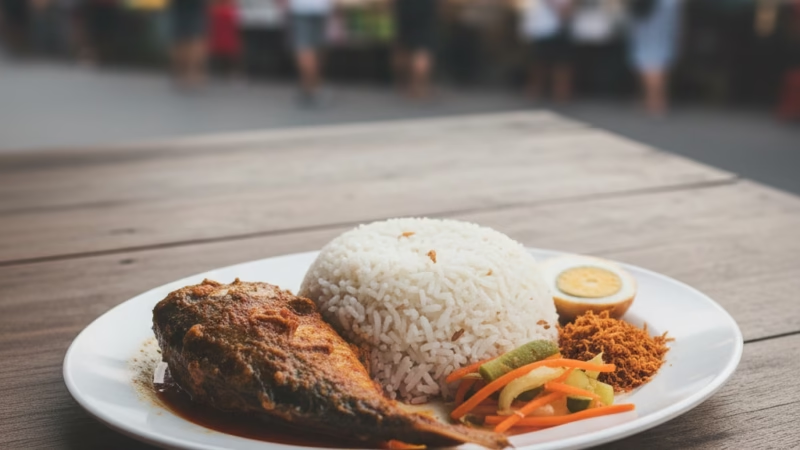
Malaysian Food
Nasi Dagang
Origin
East Coast of Peninsular Malaysia, mainly Kelantan and Terengganu, with influence in Southern Thailand.
Category
Traditional Malaysian rice dish.
Appearance
Fluffy rice with a reddish-brown or whitish tint (depending on region), paired with tuna curry, pickled vegetables, and sometimes boiled egg.
Ingredients
- Rice (white + glutinous mix)
- Coconut milk
- Fenugreek seeds
- Salt
- Tuna curry (gulai ikan tongkol)
- Pickled vegetables (acar timun, carrot, onion)
- Boiled eggs (optional)
Preparation
- Soak and steam rice with fenugreek seeds.
- Add coconut milk during steaming for fragrance and richness.
- Simmer tuna in spiced coconut gravy until thick.
- Serve with rice, pickles, and accompaniments.
Equipment
- Steamer (kukus)
- Wok or pot
- Mortar and pestle (traditional spice grinder)
Variations
- Kelantan style: Reddish rice, rich and creamy curry.
- Terengganu style: Whiter rice, firmer texture, lighter curry.
- Substitutions with chicken or beef curry exist.
Taste
Creamy, aromatic, slightly spicy with tangy notes from tamarind.
Texture
Fluffy and slightly sticky rice, tender fish, crunchy pickles.
Aroma
Coconut milk fragrance with fenugreek and spiced curry notes.
Sound
Sizzling spices in hot oil and bubbling curry as it simmers.
Cultural Significance
Served during festivals, weddings, and community feasts, symbolizing hospitality and celebration.
Symbolism
Represents prosperity, sharing, and unity, especially during gatherings.
Regional Cuisine
A hallmark of Kelantanese and Terengganu cuisine, also found in Southern Thailand.
Social Context
Traditionally eaten as breakfast in East Coast Malaysia; sold at markets, stalls, and restaurants.
Nutritional Information
- Carbs: Rice
- Protein: Tuna
- Fats: Coconut milk
- Vitamins & fiber: Pickles
Health Benefits
- Tuna provides omega-3 fatty acids.
- Fenugreek aids digestion.
- Balanced when eaten in moderation.
Dietary Restrictions
- Not vegan-friendly.
- Can be pescatarian.
Allergens
- Fish
- Coconut milk
- Possible peanuts in pickles (depending on recipe)
Cost
- Street stalls: RM 3–6 (USD 0.70–1.20)
- Restaurants: RM 10–20 (USD 2–4)
Production
Homemade, small-scale stalls, and increasingly available as pre-packed meals.
Sustainability
- Uses local rice and fish.
- Tuna overfishing poses concerns.
- Coconut farming is generally sustainable but has land-use challenges.
Availability
Widely available in Kelantan, Terengganu, Kuala Lumpur markets and eateries.
History
Originally a trader’s food; the word “dagang” means trade, reflecting its roots as a practical meal for traveling merchants.
Anecdotes
Every family has its own curry recipe, often considered a heritage secret passed through generations.
How to Prepare
- Wash and soak rice overnight.
- Steam, adding coconut milk and fenugreek.
- Prepare tuna curry with spices, coconut milk, tamarind.
- Make pickled vegetables.
- Serve with rice, curry, and optional sides.
FAQ
Q: Is it spicy?
A: Moderately, depending on the curry.
Q: Can it be made with chicken?
A: Yes, though tuna is traditional.
Q: Is it only a breakfast dish?
A: Mostly breakfast on the East Coast, but also lunch/dinner in restaurants.
Q: Difference between Kelantan and Terengganu versions?
A: Kelantan’s has reddish rice and richer curry, Terengganu’s is whiter and lighter.


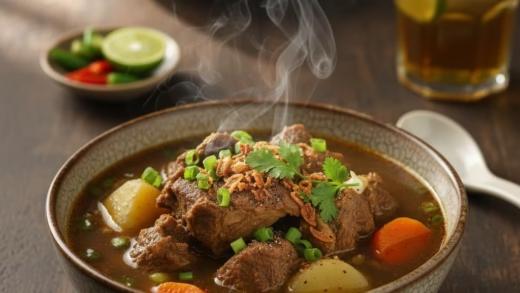

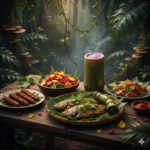





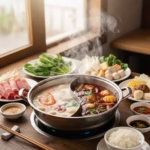
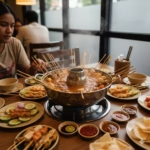
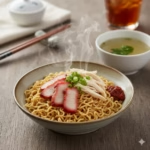


Comments are closed.